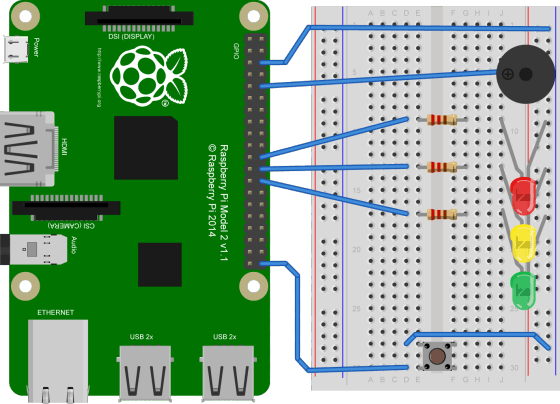
Raspberry Pi Roundup - 4th April 2016
CamJam EduKit

Ben Nuttall ran a GPIO Zero workshop at the Raspberry Pi Big Birthday Weekend. In the workshop, he used components from CamJam EduKit 1 (a cheap electronics components kit) to teach the basics of the Python library and built up to programming a traffic lights/pedestrian crossing sequence. Now, he has published the workshop as a “learn” resource on the Raspberry Pi website. We (the EduKit team: Tim, Jamie & myself) think the world of GPIO Zero as it represents the easiest way for children (and adults!) to get into physical computing using Python on the Raspberry Pi. We’re intending to write new versions of our worksheets using the library in the near future and Ben’s new resource is even more reason to do so. For Jams and other events, the new resource is perfect – it lets your students do a lot without much, if any, prior knowledge of how the language works. Great work, Ben! Take a look at the new resource here.
Zero Digital Frame

Francesco Vannini has written a tutorial, based on work by Andrew Mulholland, to allow you to use a Raspberry Pi Zero as a mass storage device which can be read as a source by a digital picture frame. Read it here. It’s an interesting method and use for the USB capabilities of the Zero and Francesco also covers his mistakes and wrong turns along the way.
Aeroponics

Sony Arouje and his wife grow plants and crops using aeroponics. They use a Raspberry Pi to automatically control the system’s various pumps and mechanisms and also to read button presses to trigger the system manually. Read more about the system and see more pictures here.
Arcade IKEA

Over on the Element 14 community, Spencer (spannerspencer) has documented his build of a retro gaming table. The original table is one of those square Lack coffee tables from IKEA (the ones everybody has got, it seems) and he has added the main part of an old LCD monitor, some arcade controls and, of course, the Raspberry Pi. The controls are hooked up to an Arduino Leonardo and the player’s commands are fed into the Pi via USB. A piece of acrylic added to the top of the table finishes it off! Read and see more here. A very nice build well within the capabilities of anyone with a few tools.





